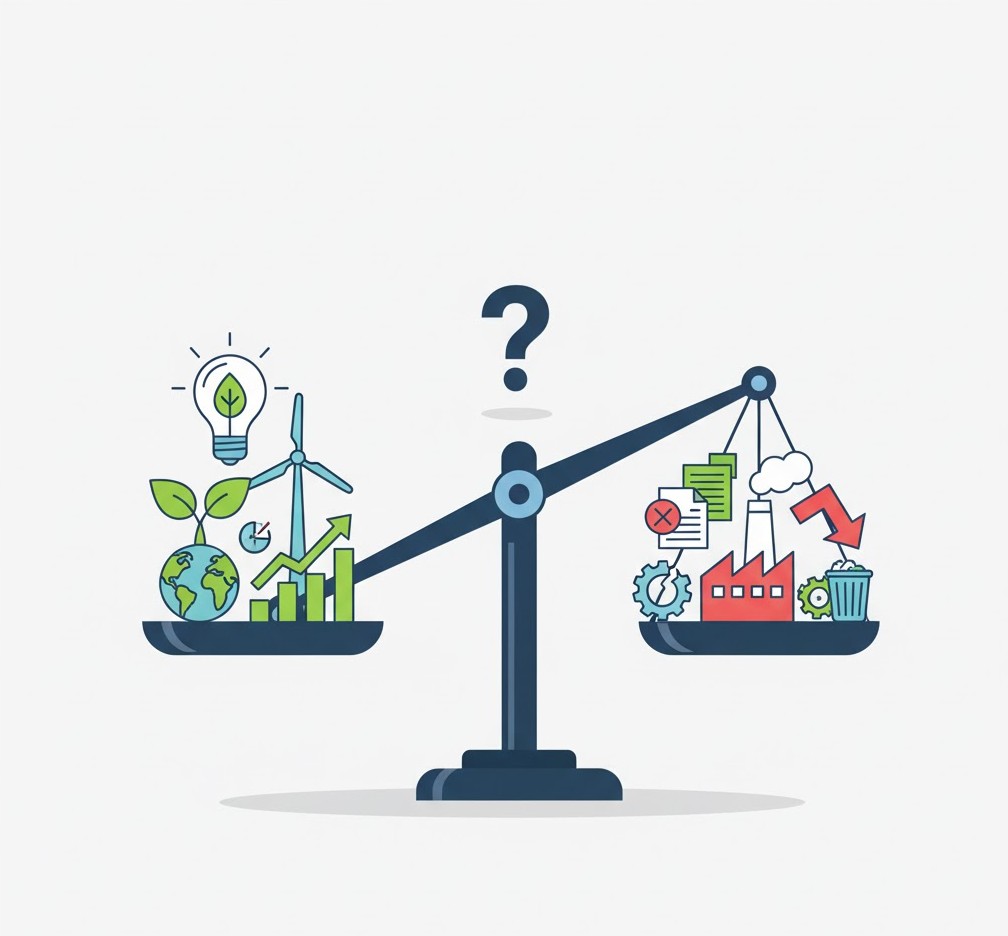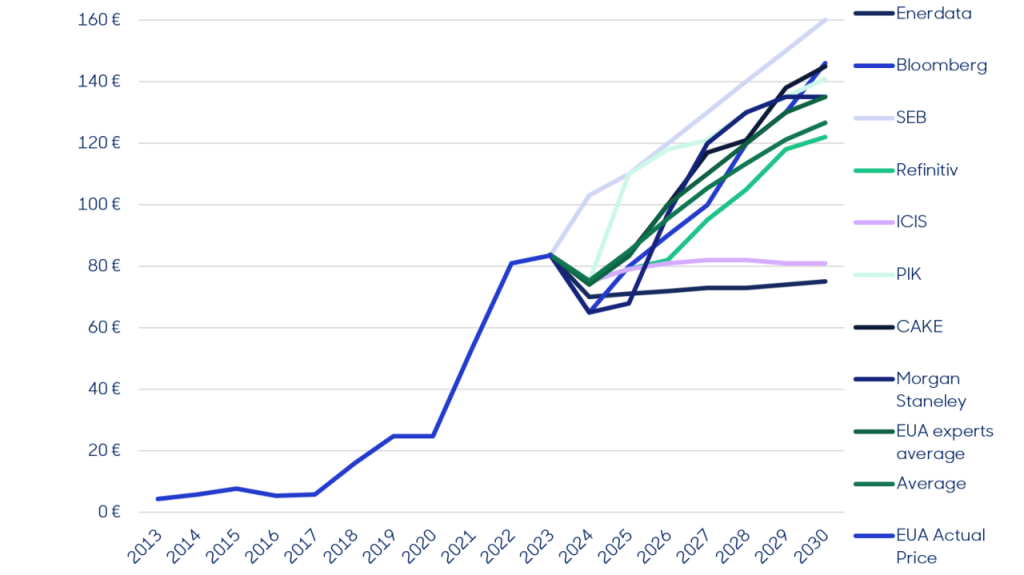The European Emissions Trading System (EU ETS) has been in place for 20 years and has become the world’s largest carbon market. But does it really work? For many organizations, the ETS feels like a complex and costly system. Others, on the other hand, see it as a crucial tool for achieving

What is the ETS?
The EU Emissions Trading System works according to the cap-and-trade principle. The European Union sets a cap on total CO2 emissions from participating plants. This ceiling decreases every year. Companies need emission rights: one right gives the right to emit one ton of CO2. These rights can be traded between companies.
In Nederland vallen ongeveer 350 installaties onder het ETS, voornamelijk in de energiesector en energie-intensieve industrie zoals chemie, raffinaderijen, staal en papier. Samen zijn ze verantwoordelijk voor ongeveer 44% van de Nederlandse broeikasgasemissies. Het systeem dekt bijna de helft van alle EU-uitstoot.
The promise: market forces lead to reduction
The rationale is elegant. By putting a price on CO2 and leaving companies free in their approach, reduction occurs where it is cheapest. An energy company can choose to switch from coal to gas or renewables. A chemical company can invest in energy efficiency.
Since the 2018 reform, the system gained momentum. The CO2 price rose from a few euros to

Practice: rising costs and questions about effectiveness
Still, there are important caveats. Dutch companies under the ETS emitted 2.3% more in 2024 than in 2023, while the European average fell by 5%. In addition, higher costs create a competitive disadvantage and the effectiveness of the system is questionable.
Cost pressure increases
The phasing out of free allowances means that companies have to buy more and more allowances. By 2030, total European carbon costs are expected to reach €66 billion, with a Dutch share of about 5%.
Competitive disadvantage
Chinese or American companies do not have to pay a carbon price, which puts European companies at a disadvantage. The Carbon Border Adjustment Mechanism (CBAM) should overcome this, but this mechanism has yet to prove its effectiveness and applies only to a limited group of materials.
The leaky system
Scientific research shows that when parties outside the ETS buy and destroy allowances (for example, companies that voluntarily buy up allowances to reduce their footprint), only 40% of the target reduction is achieved.
What happens to the remaining 60%? Through the mechanism called Market Stability Reserve (MSR), these entitlements are eventually returned to the system. The MSR is designed to balance supply and demand. But the unintended effect is that voluntary efforts to remove CO2 allowances from the market are largely negated. This significantly undermines the effectiveness of the system.
Pace is too slow
Het huidige tempo is onvoldoende om de EU-klimaatdoelen voor 2030 te halen, becijferde ABN AMRO. De meeste industriële bedrijven plannen hun grootste emissiereducties pas na 2045, en zijn sterk afhankelijk van infrastructuur als waterstofnetwerken en CO2-opslag (die er nu nog niet zijn).
ETS2: new opportunities or additional burdens?
From 2027, there will be a separate emissions trading system for buildings, road traffic and smaller industrial activities: ETS2. In the Netherlands, about 250 fuel suppliers fall under this system.
For most organizations, ETS2 will mean higher heating and mobility costs. Energy suppliers are likely to pass on these higher costs in full to their customers. Consequence: in 2027, this is expected to lead to an additional 0.4 percentage points of inflation.
De EU gebruikt de inkomsten uit ETS2 voor het vullen van het Sociaal Klimaatfonds, waarin 87 miljard euro beschikbaar is voor 2026-2032. Voor Nederland is 720 miljoen euro beschikbaar voor gebouwrenovatie, hernieuwbare energie en ondersteuning van kwetsbare groepen.
So: is the ETF effective or not?
So the answer is nuanced. The ETS has proven that a market mechanism can help reduce emissions. The systematic phase-out of the emissions cap guarantees on paper that emissions will fall.
The ETS works when:
- Your organization is large enough to bring expertise in-house
- There are clear investment opportunities in emission reduction
- Rising carbon price drives innovation
The ETS falls short when:
- Smaller businesses disproportionately burdened
- International competitive disadvantage leads to relocation of production
- Dependence on external infrastructure delays effective action
The European Commission is reviewing the ETS in 2026, which will also look at how it interacts with other climate instruments such as the CSRD and CSDD.
What does this mean for your organization?
The ETS is not a panacea, but neither is it a pointless bureaucracy. The question is how to deal with it. Don’t just see it as a cost, but as part of a broader
Wil je meer weten over hoe jouw organisatie kan omgaan met het ETS en andere ESG-wetgeving? Neem contact op. Wij helpen organisaties bij het ontwikkelen van realistische en effectieve verduurzamingsstrategieën.
